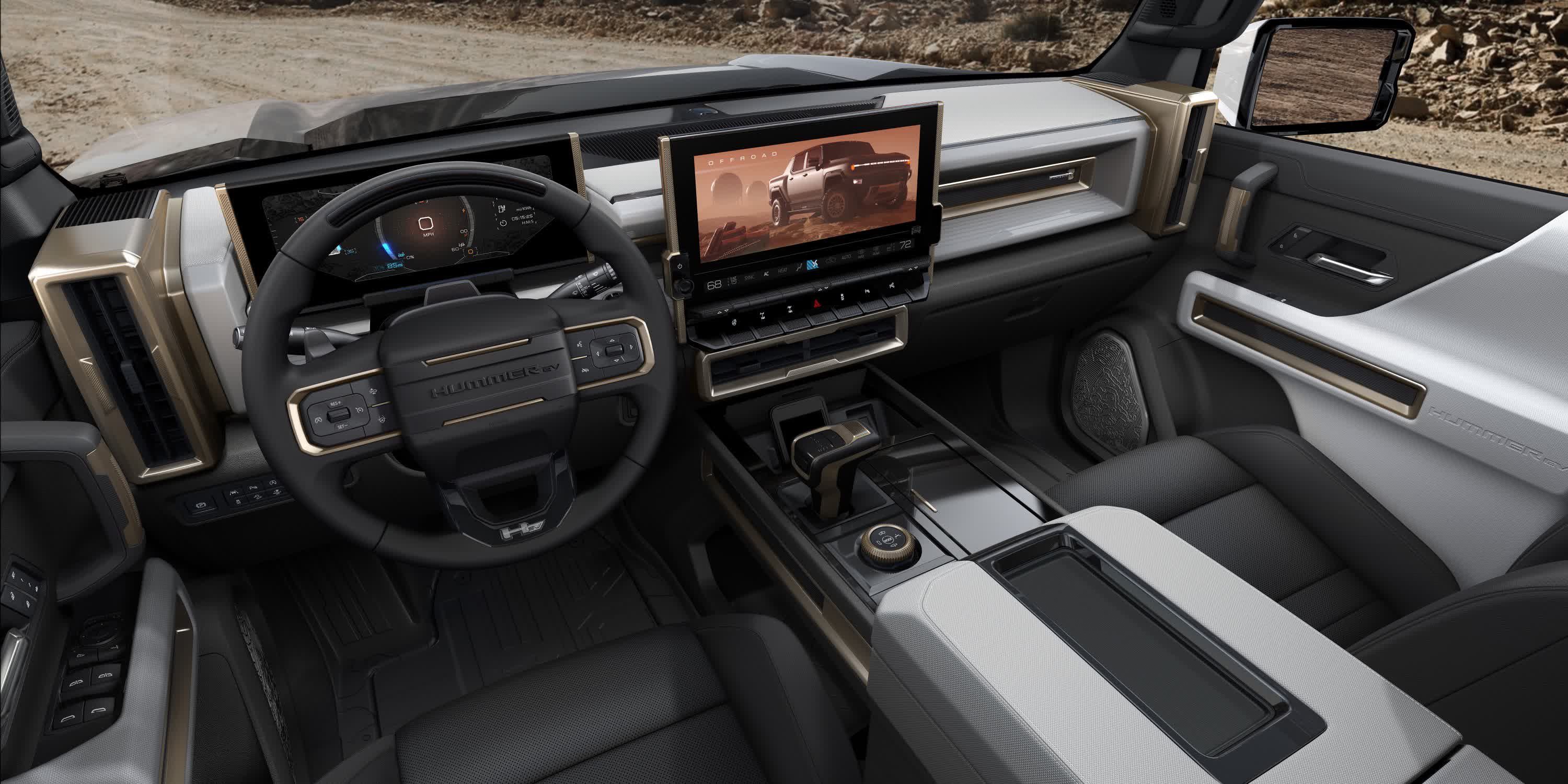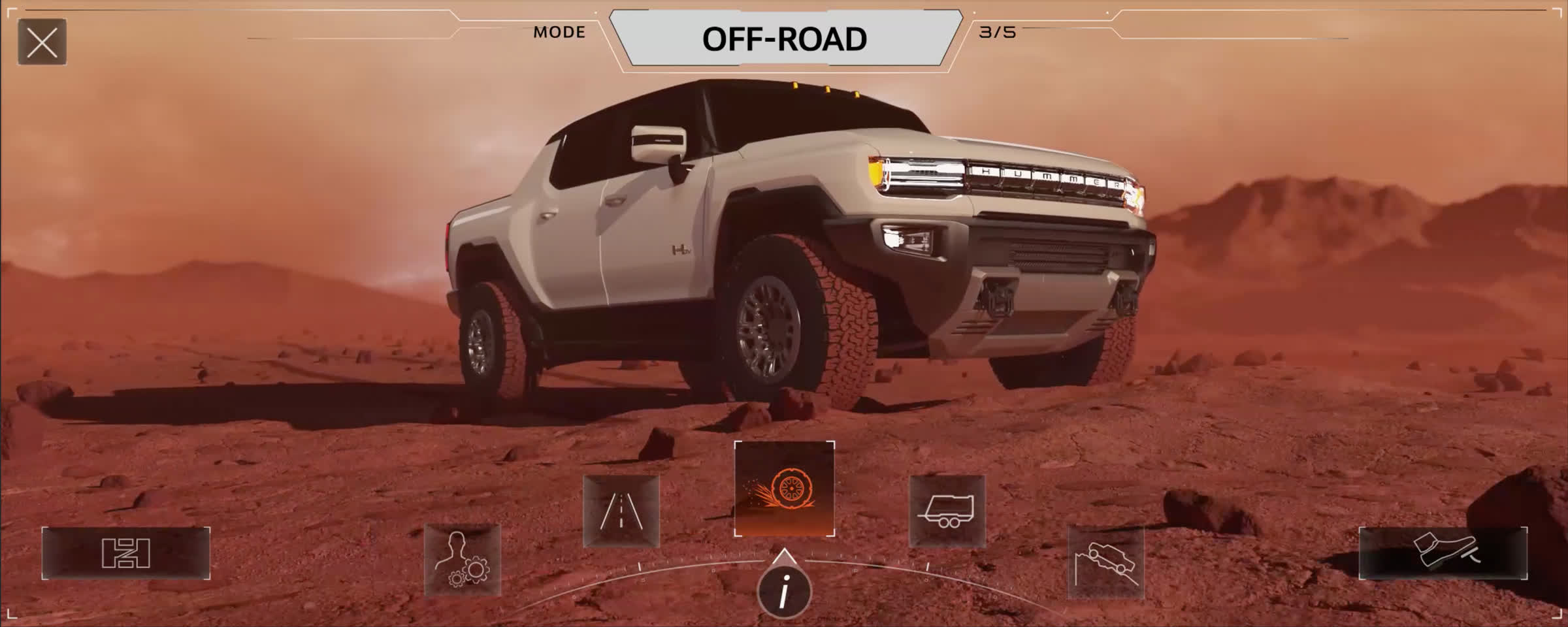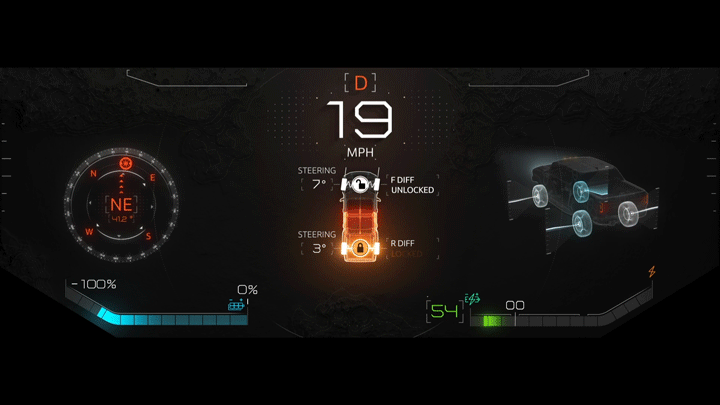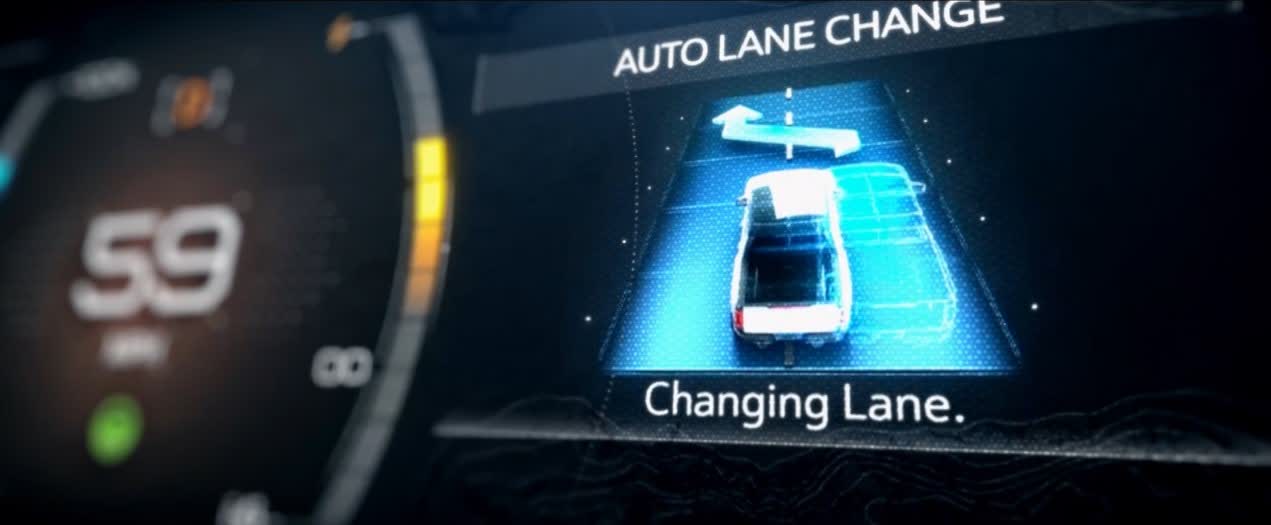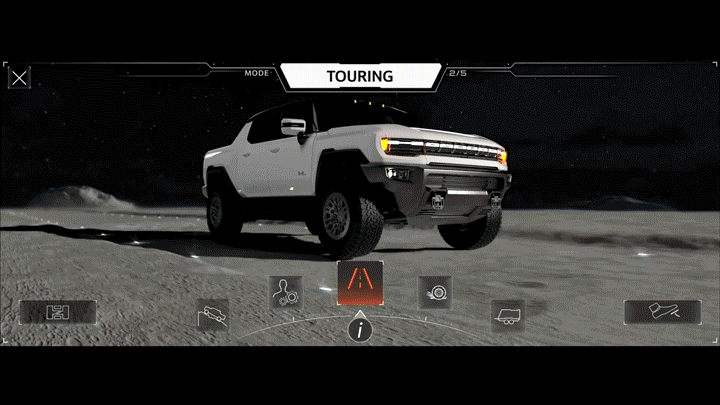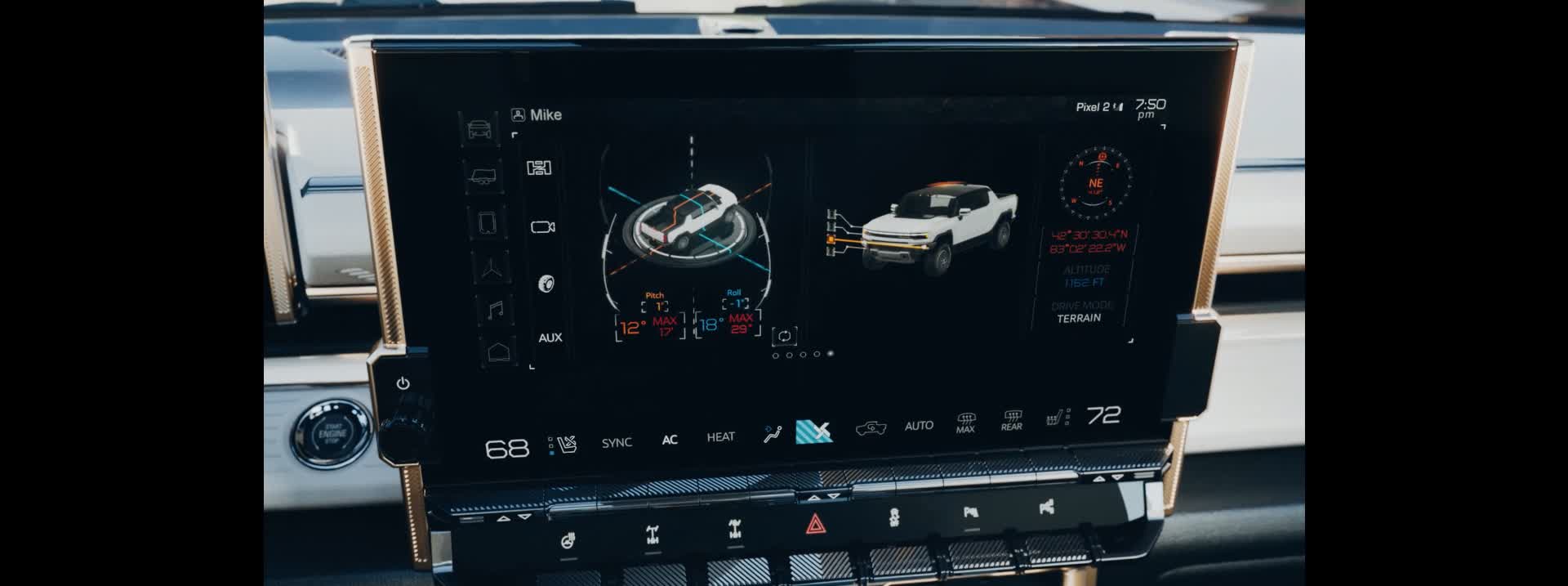GMC Hummer EV will be the first to use the Unreal powered interface
The Hummer name evokes images of excessive, gas-guzzling, caricatures of the SUV craze that took over North America in the late 1990s and early 2000s. But the name was recently resurrected as the GMC Hummer EV, with 1,000 horsepower, over 350 miles of range, a hands-free semi-autonomous driving mode, and four-wheel-steering.
Positioned as GMC's halo product, it is a showcase of incredible new features that will trickle down into more mainstream vehicles. One small part of the technology found in the Hummer EV will have a significant impact, spreading to many cars over the coming years. For the first time, the Unreal Engine will be used in a consumer automobile, as all displays in the new GMC Hummer EV are powered by the very same software that enables some of the most popular and visually stunning video games on the market.
Making the Hummer EV Unreal
Scott Martin, Creative Director of User Interface Design at General Motors (parent company of GMC) explains that the lengthy process of picking the Unreal Engine.
"It took us over eight months to find a perfect partner," he says. "But this is about more than just the features. This is also about the team and the partnership. Epic Games and its Unreal Engine is used by game developers all over the world."
Indeed, some of the most popular games on the market, like Fortnite, Rocket League, Gears 5, Borderlands, Crash Bandicoot 4, Marvel vs. Capcom: Infinite, Final Fantasy VII: Remake, and more use the Unreal Engine. Some of those games are pretty graphically intensive, and Gears 5, for example, is used in TechSpot's GPU benchmarking tests. You can expect big things from an Unreal Engine-powered infotainment system.
Using the Right Tools for the Job
The ability to render detailed imagery in real-time is an asset when it comes to off-roading and the activation of the hands-free Super Cruise system.
Martin explains that automakers usually have to reprocess all of the imagery and renders of the vehicle down for use on the in-car display and that it can be very resource-intensive. "That's something the video game industry has been doing for a long time," he says. "It's very similar to what [game developers] are doing, and in terms of software development, the gaming industry has unified these processes, making it easier and quicker for us to do it."
Therefore the models used for the design of the actual vehicle are similar to those used to represent the vehicle on the in-car displays.
"The engine allows us to use real-time 3D geometry like a video game," he explains, painting a more vivid description of how the Hummer EV will utilize the Unreal Engine.
Videos and imagery from the reveal of the vehicle show off what the screens would display like when going off-road. By using various sensors and camera feeds, the screen may show the terrain around the Hummer while using an external perspective of the vehicle. It's like using a third-person view in a video game. It could help drivers navigate tricky off-road conditions, where obstacles on the trail are hard to spot.
It looks realistic. The wheels on the screen articulate according to the terrain. The interface clearly shows off various stats and figures for the off-road angles and clearance. In the past, making this kind of bespoke interface for just one vehicle seems like a significant time sink, using a lot of resources on one item, but now Martin says these types of features can be created quickly with the Unreal Engine.
"In the past, this process was tedious and used a lot of resources," he says."The real-time 3D allows us to change that process, add real-time geometry in the system."
Designed to Help Demonstrate the Features and Capabilities of the Hummer EV
This idea will hopefully extend to the world of driver assistance features. General Motors has one of the few hands-free adaptive cruise control systems that can drive itself on the highway, capable of making lane changes and navigating exits without driver intervention.
However, there is a lot of misinformation about these driver assistance features and what they're capable of. Martin believes that having a cleaner interface will help to prevent confusion.
"The Unreal Engine will allow us to blend things together," he says. "We have a real-time 3D representation of the car, and the vehicle ahead, and some text, which will help us use the actual vehicle as the teacher of these features."
Furthermore, by using the Unreal Engine for its interface, the GM team can design, test, fix, polish, and iterate on their designs quicker than before.
"The feedback loop is much quicker this time," says Martin. "Take a rendering of a three-quarter view of a vehicle, for example (displayed on the screen). Any time we needed to change the color or the design of the front fascia (like when a vehicle gets a new grille, headlight, wheel, or the overall design) it would need to be updated. Then we need to re-render all of that data. This process would take a week or two using our old tools. Now with the Unreal Engine and these tools, you can get that done in an hour or two."
In theory, that should allow for quicker bug fixes, new features, and more unique interfaces to multiple vehicles. It will save time and resources.
"To implement what the Unreal Engine is capable of, it's much easier," Martin says. "With a different tool, it's much less streamlined."
Versatility Beyond Platforms
Games powered by the Unreal Engine span different genres, art styles, and platforms, further showcasing the versatility of the engine, which is appealing to Martin.
"Unreal Engine can run on very little, and the requirements are pretty low," he says. This is important for the future. If the software becomes standardized across General Motors vehicles, the types of hardware it will be running may have to scale appropriately.
In the Hummer EV, the system is powered by an Intel processor, along with 64 GB of memory, which is a pretty hefty rig by automotive standards. While the Unreal engine is known for versatility in terms of hardware requirements, platforms, and the types of content it can make, Epic Games has also seen the engine used by movie studios, commercial video shoots, and VR experiences.
The Hummer EV is the first application of the software in a consumer automobile. They aren't planning for this to be a one-off situation.
In a recent Unreal Engine blog entry, the company explains its belief that modern interfaces are essential in the future especially as more self-driving capabilities become available. They are working hard to collaborate with automakers to offer more solutions to make things easier and more efficient for these big companies that have sometimes lagged behind consumer devices when it comes to human-machine interfaces.
It has created a new human-machine interface team, dedicated to supporting automakers who are looking to up their game. The developer also points out other marketing advantages to using the Unreal Engine, from reusing the digital assets in promotional materials and commercials, to even creating a skin in Rocket League to boost the profile of the product.
The developer even suggests that like a video game and its patches and DLC, the Unreal Engine will allow for over-the-air updates, patches, and new features of the interface and infotainment system.
From design to deployment, to integration and even marketing, it seems like the Unreal Engine is poised to be a big part of the automotive landscape moving forward. Unfortunately, the GMC Hummer EV is scheduled to hit the streets in the Fall of 2022, so you'll have to be patient to get a first-hand experience of the new technology at work.
